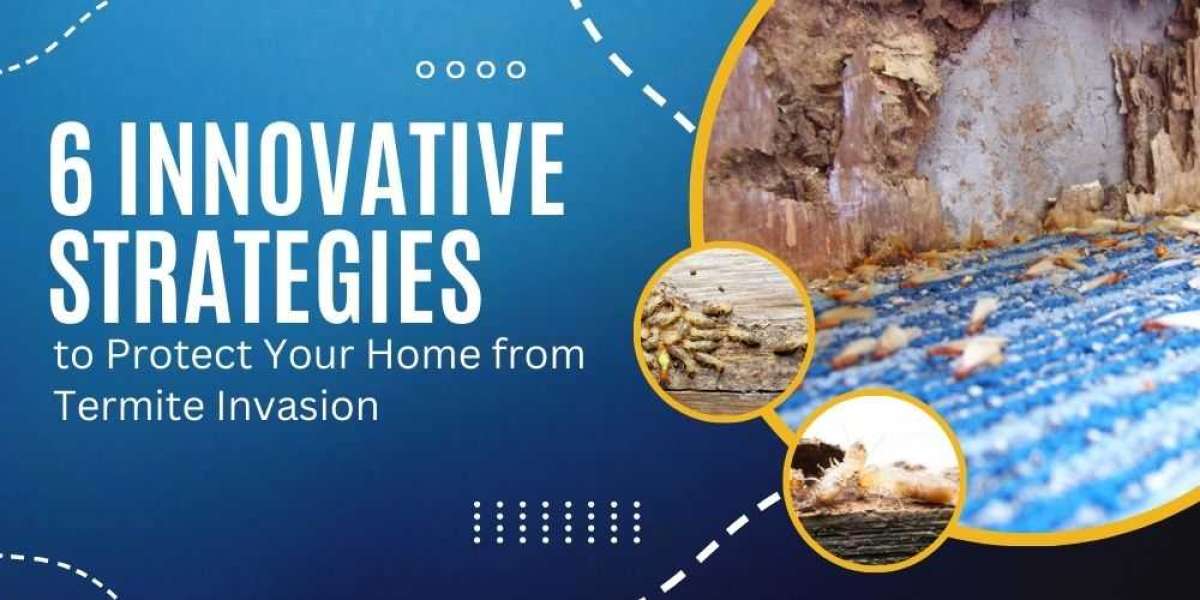Are you wondering how to defend your home against the stealthy assault of termites? Termites seriously threaten homes, causing extensive damage that can lead to costly repairs. Taking proactive termite control measures is crucial to protect your most valuable asset.
Furthermore, this article will explore six innovative strategies beyond traditional methods, allowing you to combat termite invasion effectively. Using these techniques, you may develop a thorough termite protection strategy that includes non-toxic soil treatments and landscape design.
1. Implement Landscape Design that Discourages Termites
Effective landscaping is crucial in termite prevention, offering a strategic defense against potential infestations. By incorporating specific design elements and plant choices, homeowners can significantly reduce the risk of termites near their living spaces.
Here are some fundamental landscaping techniques to discourage termites:
- Termite-Resistant plants: Incorporate plants known for resisting termites, such as vetiver grass, catnip, and marigolds, which can act as natural deterrents.
- Proper plant placement: Ensure all vegetation, especially wood-based plants, is planted safely from home structures to prevent termites from transitioning from the plant to the building.
- Avoid wood mulch: To further reduce risk, use termite-resistant mulch options like cedar, less attractive to termites, near the home's foundation.
These strategic choices in landscape design can serve as an effective first line of defense against termite invasions.
2. Invest in Termite-Resistant Building Materials
Investing in termite-resistant building materials is an essential defense strategy for safeguarding your home against infestations, enhancing durability, and effectively resisting termite damage.
Here are the advantages and applications of using these materials:
- Treated wood: Treated with chemicals that repel termites, this wood is ideal for framing, decking, and other structural components exposed to the elements.
- Metal framing: Metal framing is immune to termite damage and provides a robust alternative for structural supports and beams.
- Composite materials: Typically used for outdoor decking and trim, composites resist termite rot and decay.
3. Utilize Smart Moisture Management Systems
Termites are notoriously drawn to moist environments, making effective moisture management a critical strategy in preventing their presence in your home. By maintaining a dry environment, you can significantly reduce the appeal of your property to these pests.
These are the technologies and strategies that can help:
- Innovative dehumidifiers: These devices automatically adjust to maintain optimal humidity levels in your home, discouraging termite attraction.
- Leak detection systems: Modern systems can alert homeowners to moisture or leaks before they contribute to termite-friendly conditions.
- Integrated home systems: Some smart home systems combine humidity control with heating and cooling to ensure a consistently dry environment.
4. Adopt Regular Monitoring Technology
Introducing modern monitoring technologies, such as electronic termite detection systems, is essential for detecting termite activity early. These systems can provide homeowners with real-time alerts, allowing for swift intervention.
The advantages of adopting regular monitoring technology for termite detection include:
- Early detection of termite activity
- Prompt response to mitigate damage
- Cost-effective long-term termite control
- Peace of mind for homeowners
Homeowners can proactively safeguard their properties and prevent extensive termite damage by utilizing electronic termite detection systems.
5. Apply Non-Toxic Soil Treatments
Non-toxic soil treatments offer numerous benefits as a preventive measure against termite infestations. These treatments prevent termites from entering the building by erecting a barrier of defense surrounding the property.
The advantages of applying non-toxic soil treatments include:
- Environmentally friendly solution without harmful chemicals
- Long-lasting protection against termites
- Minimizes potential health risks for residents and pets
- Preserves the integrity of the soil and surrounding ecosystem
- A cost-effective method compared to reactive termite control measures
6. Create Physical Barriers:
Physical barriers are a formidable defense against termites, preventing these pests from accessing a home's structure. Designers create materials like sand barriers or metal termite shields to block entry points. Here are essential details on how these barriers function:
- Types of barriers: Sand barriers hinder termite movement, and installers place metal shields in building joints to block entry.
- Installation sites: Barriers are most effective when placed around the foundation, near pipes, and at entry points that connect the ground to the wood of a building.
- Durability and maintenance: Once installed, these barriers offer long-term protection with minimal maintenance, ensuring a termite-free environment.
Termite-Proofing Triumphs!
Incorporating these innovative strategies into your termite control plan is essential for ensuring the long-term protection of your home. Using landscape design, termite-resistant materials, moisture management systems, monitoring technology, non-toxic soil treatments, and physical barriers, you can effectively protect your home from termite damage. Also, recognizing the critical need for proactive termite control in Loganville, PA, is vital. Don't wait for an invasion—take proactive measures in termite control and enjoy peace of mind knowing your home is secure.







